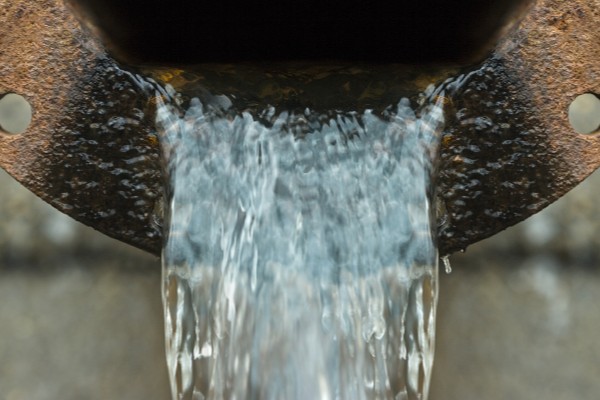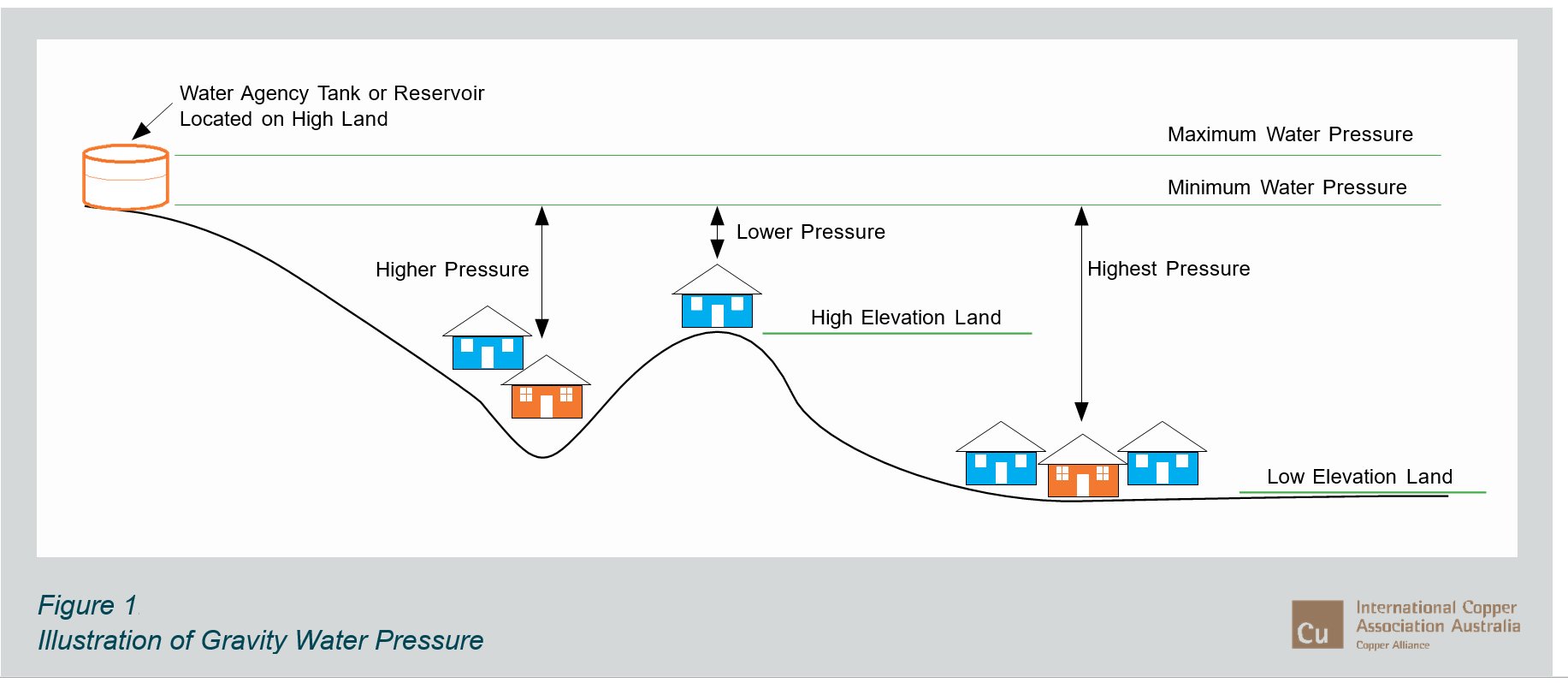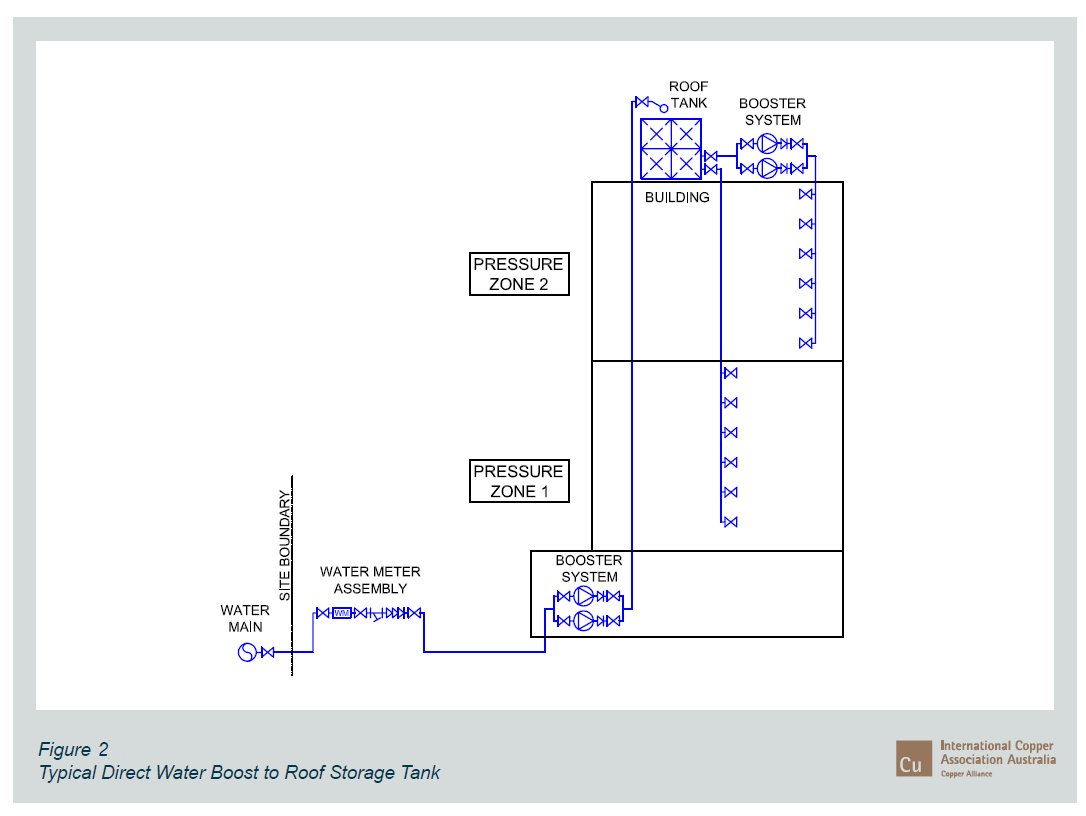Water pressure: It goes with the flow

Water pressure and flow are connected at the hip, it’s why designers and plumbers must consider the two together when providing an optimal water service. John Fennell writes.
Water pressure within a commercial or residential building should be in accordance with AS/NZS 3500.1 Plumbing and Drainage being not less than 50kPa and not more than 500kPa within a building. Ideally pressure at outlets should not be less than 150kPa.
Water pressure is a measure of the forces required to move the water within the water services pipework to the fixture outlet and in addition to retain a residual force in the pipework to ensure water is immediately available when required.
When water pressure falls below 150kPa it is likely that plumbing fixtures and appliances fail to operate or function correctly. Where the water pressure is deemed inadequate, a means for increasing the pressure shall be provided, such as pumping.
If water pressure is excessive, and beyond those specified in AS/NZS 3500, the associated installation risks are considerable and include:
- Water wastage
- Noisy piping system
- Water hammer
- Potential for leakage
- Failure of pipe joints and assemblies
The installation of pressure limiting or reducing valves is then considered when the residual pressure at outlets exceeds those specified or required. Incidentally, the warranties of some appliances or fixture outlet devices may be voided if excessive pressure is evident.
Static pressure
Static pressure is the maximum pressure that you can expect in the system when there is no water flowing. There will be no flow, as long as the taps are closed. Assuming that the pipe is horizontal, no matter where you measure the static pressure along that pipe, you would have the same pressure reading.
For a single-story level house, if the pressure is 350kPa where the pipe first came into the house, it would also be 350kPa at the rear tap of the house. As soon as a tap is turned on, the pressure would reduce.
Static pressure will only vary between outlets if there is a height difference within the building, such as multi-storey buildings. Static pressure will also change if here is a change in the water pressure in the feed main that can occur during peak periods.
Flow pressure
Flow pressure (dynamic pressure) is the pressure that exists at any point in the system when water is flowing at that point. Once water starts to flow, the water moving through the pipe uses some of its energy to push past the pipe surface, bends, tees and valves no matter how smooth the internal piping system is.
This consumes energy and reduces the pressure available to push the water through the pipe. This pressure loss is due to friction that occurs at every point along the pipe. When water starts to flow through a pipe, the pressure is highest at the source and decreases every metre along that pipe. The pressure would be lowest at the furthest tap or outlet.
For example, if we wanted to move 1L/s at 2.4m/s velocity through DN25mm horizontal copper tube, say 25m in length, we might expect to lose about 70kPa of pressure. However, if you were to slow the velocity down to 1.2m/sec and a flow of 0.5L/sec then the friction loss will be reduced to 20kPa. When the flow rate decreases, the water pressure increases and when the flow rate increases, the water pressure decreases. (Refer to the pressure loss table from the pipe suppliers) Copper has one of the lowest frictional resistances of all piping systems.
Designing for adequate flow pressure is an important consideration as we have all felt the issue when taking a hot shower and someone turns on another tap. If not properly designed some fittings may be completely starved of water when other outlets are in use.
Creation of water pressure
Water pressure is created in two ways, these being:
- Gravity pressure, generated at water outlets that are lower than a water storage tank or vessel.
- Pumped (boost) pressure created by the force of a pump, which draws in water from a source and discharges it at a higher water pressure from the outlet of the pump.
Gravity water pressure
Where water utility operators have constructed storage vessels or reservoirs at elevated locations, the water is distributed from these tanks through a network of piping known as a gravity water mains system.
Water pressure varies at different locations along the distribution water main depending on the distance from the reservoir and the properties elevation from that reservoir (refer to Figure 1).

Properties located at the low elevation areas receive higher water pressure. Alternately properties located at the highest elevation receive lower water pressure.
The horizontal distance from the reservoir or tank will also have considerable influence on the gravity water supply pressure at the property itself. Properties located at a greater distance from the reservoir will have lower water supply pressure due to frictional loss within the pipework as compared to property situated closer to the storage vessel.
Creation of pumped water pressure
When the water supply pressure is considered inadequate for the water service functions required by that property or building, a pressure pump (booster) set would need to be provided.
Pump pressure head is added to the available mains pressure to create the desired head to overcome and compensate the vertical height of the building. It also needs to overcome frictional resistance within the pipes, fittings or valves and supply the required water pressure at the fixture outlet.
Pressure head is measured in metres and every 1m increment in height (1m head) requires 9.81kPa to lift the water 1m. Similarly, for gravity systems for every 1m below the reservoir gravity provides 9.81kPa water pressure. The rule of thumb is 1m head equates to 10kPa.
Putting this into perspectives, the Crown Casino tower in Sydney is 271m high so to pump water from the bottom of the building to the top would require in excess of 2,680kPa water pressure.
An example of how a tall building may be supplied with water is shown in Figure 2. Due to height difference of each floor, pressure limiting valves will be required at each level.

Available head loss
When selecting and sizing copper water services, head loss (pressure loss) of the tubes and fittings is equally important as the supply pressure.
Excessive pressure losses in the system can be caused by selecting incorrect pipe sizes, valves with high frictional loss, this may cause greater overall frictional head loss within the water supply services system. This of course is provided that velocity of the flow is not excessive. Cold water flow velocities should ideally be within the range of 1.0 to a maximum of 2.4m/s.
Designers must take into account the selected pipe diameters, which will enable the design flows to be achieved, without losing significant pressure due to frictional resistance.
